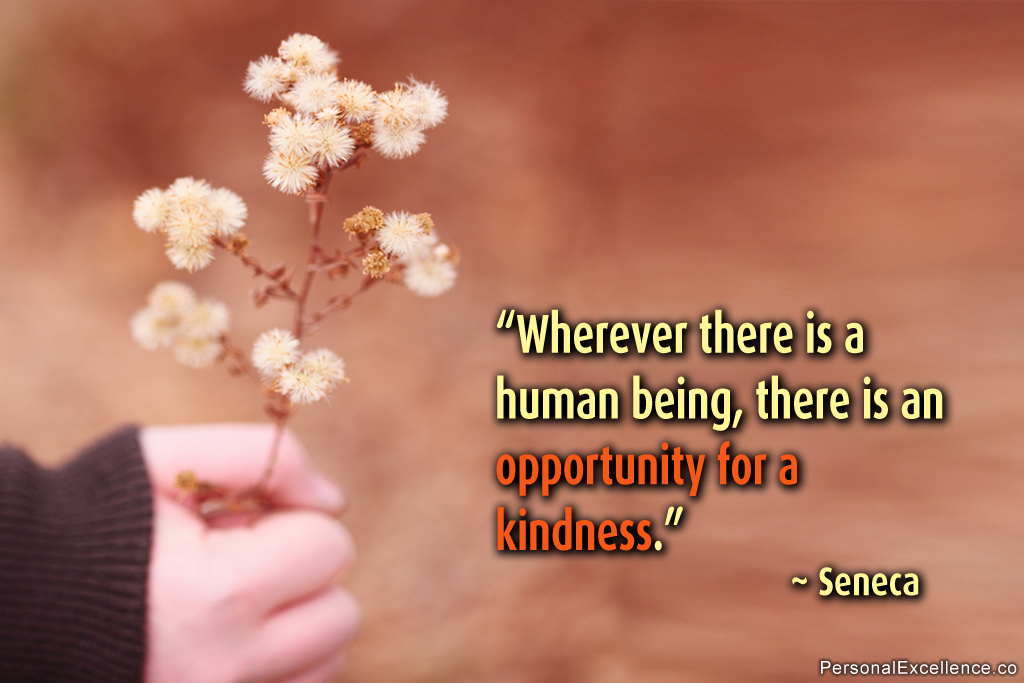
(Image: Ethan Lofton)
“How do you put your best foot forward when you have a short time to make a good impression? I’ve had times when I have to go to a new place and meet new people in workshops, competitions and conferences which are very short. I have difficulty doing things like public speaking — which I’m comfortable during other times! I start feeling nervous, anxious and pressurized. How do you keep calm and give a good impression during such times?” — Charu
Hi Charu!
Why First Impression Isn’t as Important as You Think
It probably helps to know that in the larger spectrum of time, whatever impression people have of you have little to do with the first impression you gave. That’s because first impressions typically last as long as it takes for you to form a second impression, after which the person’s impression of you becomes a weighted average of the first two impressions. Add ten, to a hundred, to a thousand interactions to the mix, and you can easily see why first impressions aren’t as important as what one might think.
For example, I think well of many of my good friends today not because they left a stunning first impression. Contrary to that, some of them actually turned me off when we first met–I felt they were distant, even snobbish. Yet, my opinion changed for the better during our subsequent interactions. Our commonality in values drew us closer together over time and the rest is history.
On the other hand, I’ve met people who gave me a great first impression; however I was later disappointed by their character flaws like anger issues and dishonesty. I never stay in touch with them there after because these aren’t people I want to have in my life.
In my work as a trainer, I’ve had imperfect trainings before. My latest class on emotional eating had an unprecedented software hiccup which set the class back by 15 minutes (I then extended the class by 30 minutes to finish covering the material). While new participants might have gotten a bad first impression in the first 15 minutes, subsequent occurrences such as seeing the strong quality of the content in the two-hour class, my readiness to stay back to cover all material and answer participant questions, and strong endorsements by the regulars, probably helped allay concerns.
On the same note, while most of us may freak out about meeting people for the first time and worry about the impression we are going to make, the thing is most people actually don’t care, at least not to the extent we think they would. Let’s say if you make a bad joke during your first meeting with X. Perhaps X gets offended and thinks you are strange. But he/she is not going to think about this for the 10 minutes, 30 minutes, 1 day, or 1 week after that, because it’s not a significant thing in his/her life. He/she is going to brush it away, then get right back to what he/she was doing before he/she met you. In the end, the only person obsessing about your first impression is you, when others don’t even care at all.
At the Same Time, Impressions Still Do Matter
That said, it doesn’t mean you should not care about making good first impressions. Ultimately you want to put your best foot forward when meeting people for the first time (or other times), because it’s about being respectful to them for their time. This is especially so in romantic dates, business meetings, and public speaking. I’ve been abhorred by terrible first dates; business meetings where the attendee turns up late, frazzled, and unprepared (I’ve to admit that I used to be guilty of this); even email pitches where the person obviously sent me a template without bothering to customize his/her pitch and get facts right (such as referring to me as a “Mr.”).
For these people, I don’t write them off, but I also don’t pay special attention to them unless future encounters prove otherwise.
How to Form a Good Impression in Crunch Time
So how do we make a good first impression, especially when we don’t have the luxury of time?
Step 1: Give Your Elevator Pitch
Ever heard of the elevator pitch? It is a business concept which refers to a short summary used to quickly define a person, profession, product, service, organization or event and its value proposition. The name “elevator pitch” reflects the idea that it should be possible to deliver the summary in the time span of an elevator ride, which is approximately 30 seconds.
When making new friends in non-business settings, there’s no need to go full-on with some snazzy pitch; people will probably think you are crazy. Rather, borrow the idea of the elevator pitch, which is to showcase defining things about you in your first 30 seconds of introduction.
What are your top accomplishments which you are most proud of? What pet project are you currently working on? What are you most passionate about? What defines you? There are no hard and fast answers, but things you may want to highlight are successfully completing your PhD, recently quitting your job to pursue your passion, clinching a guest writing stint with a high profile news publisher, working in a prestigious company, raising a family of three kids, publishing your first book, traveling for the last three-and-a-half-months, and so on.
The point here isn’t to rattle about how awesome you are, but to share key things about yourself which you are proud of, which will give people a taste of how you are like as a person.
For example, say you are a full-time blogger and you quit your job last year to pursue your passion in travel writing. This is something you are really proud of. In your introduction, you can go, “Hi! I’m Peter. I’m a full-time blogger. I quit my job last year to pursue my passion in travel writing, and now I run a travel blog, Run with the Wind. It’s been six months but I’m pretty excited because the readership has been picking steadily. I hope to grow it double in the next two months. How about you, what do you do?”
Now, your simple 30-second introduction has already perked others’ ears without any effort on your end. Blogger? Full time? How? Travel blog? What URL? What countries has he covered before? So he earns money travel blogging? How does he do that?? These are probably just some questions flashing through the person’s mind in that half minute you were speaking.
The good thing about being so upfront in your sharing is that you automatically attract like-minded people who want to know you better and filter away those who don’t. So don’t worry about being forward; rather, focus on being true to yourself and letting your true self shine. :)
Watch out: Don’t go overzealous though and go on a 10-minute spiel talking about how awesome you are and why you are the king/queen of the world; that’s probably going to turn people off. Talk about the key things you are proud of which defines who you are, then use them as fodder to jump-start your connection.
Step 2: Adhere to the 50-50 Rule
Second step is to adhere to the 50–50 rule I shared before in 10 Rules of a Great Conversationalist. Ensure each of you take turns to speak, and that each sharing balances out the other’s. It’s okay if the other person is talking a little more or if you are talking a little more depending on the topic; the point is to ensure talk time is distributed between both of you. If you are with three or more people, then involve everyone in the chat where possible.
Why this rule? People generally like to share. Even the shyest, quietest people do too, if you ask the right questions. (All of us have things we are passionate about, be it our life partner, our job, our hobbies, our pet, our last canoeing experience gone wrong, etc. Quiet people are quiet only because you have not found what makes them tick.)
Also, by allowing people to share, you put them in the spotlight and allow them to shine. Most people talk too much and don’t let others take the stage–you don’t want to do that. Engaging people on a 50–50 level will certainly boost others’ impression of you because you are taking an interest in them where most don’t–and that highlights your kindness and sensitivity.
On the other hand, don’t go overboard and expect the person to share 100% of the time! That would simply be an interrogation! Besides getting to know the other person, you want him/her to know you too, and you can only do so by sharing as well. Take the stage with the person and he/she will realize that you are there to make a real connection.
Step 3: Be of Service to Others
Last but not least, find ways to be of service to others. Say this person is interested to write a book. Do you have any knowledge on book writing or publishing? Do you know any friends in publishing? Know anyone who just released a book? How about anyone who is currently writing a book? Offer your best knowledge, then point the person in the right direction.
One of my good friends today, Karl, struck me with a great first impression during our first correspondences up to the day we met. I was in New York City (by myself) back in 2011, and knowing that he was in New York too, I reached out to say hi. Karl was just a business acquaintance then–we had only connected via email when I did the Groupon Singapore interview on my blog; I was half expecting a non-response when I reached out.
To my surprise, he graciously followed up and even invited me to join him, his wife, and his friends for dinner that weekend. He invited me for brunch with his friend the next day and showed me around New York City that afternoon and evening, even though he didn’t have to. We subsequently met up again, kept in touch and became good friends.
What struck me about Karl then was his kindness; he didn’t have to show me around NYC or connect me with his friends but he did. Because of that, he left a striking impression which made feel that this friendship is worth pursuing and building.
So ask yourself, how can you be of service to others? Is there anything you can be of help to this person? What is this person working on now which you can assist him/her with? Is there anyone knowledgeable in the field whom you can connect him/her with?
You don’t have to offer help only when people ask for it; most people never ask for help because they are independent and nice that way. Extend a helping hand even if the person doesn’t need it, and you may find a new connection waiting to be fostered.
Final Words
These are three simple steps you can do even in encounters as short as 15 minutes. Pitch yourself, do a 50–50 sharing, and offer help where possible. You will definitely leave a lasting impression in many’s minds if you execute the steps right.
At the end of the day though, remember not to over-worry about others’ impressions of you. Rather, live your life based on how you can convey your values through your actions. Doing that will automatically lead to you making a good first impression in front of others, not the other way round.
I’ve written many more tips on making good impressions and connecting with people. Read the other pieces in my interpersonal communication series:









 Thanks for reading. If you like my free articles, join my private email list and get my latest updates and articles sent right to your inbox.
Thanks for reading. If you like my free articles, join my private email list and get my latest updates and articles sent right to your inbox.